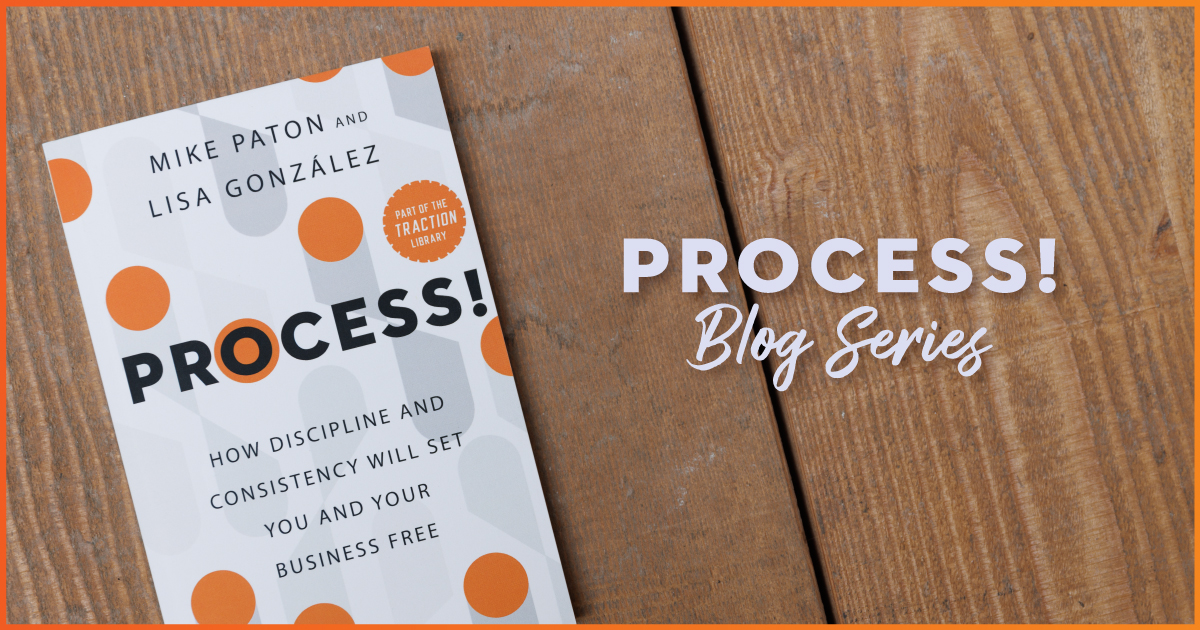
Don’t we have a process for closing the books? She keeps missing the monthly deadline.
We shared these tools when we onboarded him; why isn’t he following the process?
If you have heard or expressed frustrations similar to those above, you’re not alone. In our earlier blog, we shared the first tool to strengthen your Process Component™: The 3-Step Process Documenter™. Many organizations devote time and resources to this first step of documenting and simplifying their core processes, but don’t get the benefit of this work. This second and vital tool, the FBA Checklist, provides you with the four steps to get your core processes followed by all:
- Train
- Measure
- Manage/LMA™
- Update
We will take these one at a time, starting with Train.
1. Train
Train everyone who touches even one step in the process. Many leadership teams train at onboarding, but then are surprised if an employee doesn’t follow the process. If you’re a company running on EOS®, you know that people need to hear things at least seven times in order to process or internalize it. In fact, studies have shown that people forget 90% of what they learn within the first 30 days and 70% of that within the first 24 hours! Embrace the effort to provide ongoing and effective training and you will see more impactful results.
Training can take place in any format, including:
- Weekly Level 10 Meeting™
- Departmental meeting
- One-on-one discussions, or
- On the job or ride-alongs
To train your teams effectively, it’s vital to know your audience. As opposed to a historical approach of command and control, a collaborative training approach generates more buy-in from your team. Welcome feedback and use this information to improve or update your processes.
To make your training effective, however, we can’t stop there. If we want to see consistent results we must measure the effectiveness of the processes.
2. Measure
Step 2 of the FBA Checklist is Measure. Successful teams measure to reinforce training and help team members adopt this new, better way of doing things. To determine the effectiveness of your processes, measure one or more of the activities within that process for:
- Compliance
Does the team follow the required steps in the process? For example, if the restaurant restrooms must be cleaned and checked every hour, does the Scorecard reflect that the team followed this process? - Frequency
Does the team do it often enough to get the desired results? For example, say your process requires meeting with four new prospects each week to generate one new client. If we measure for that frequency, does your team hit that goal? - Outcomes
Do you get the desired results? If you need to sell 100 bottles each week to hit your revenue goals, are you doing so?
You can capture measurements as an individual measurable or on a departmental or company Scorecard. Measuring one or more of these categories will provide you and your leadership with information to keep a process alive and determine if it’s being followed.
What do you do when a process isn’t being followed or when your team doesn’t hit their numbers? At this point, you’ll need to own your roles as leaders and managers, and, ahem, manage.
3. Manage or LMA
Successful companies lead and manage their teams to drive accountability (LMA) for adopting the new process and consistently getting the desired results. Great managers know that communication is a two-way street. They collaborate and solicit feedback on what is and isn’t working. If your team has suggestions on improving the process, gather that feedback too. Recognize and celebrate the wins. And, if a process isn’t being followed or numbers aren’t being hit, coach and manage the individual or team to achieve that objective.
4. Update
Along this journey, you and your team will identify areas where the process can be improved. The process owner should gather that information to update his or her processes at least once a year. Some teams pick one or two processes to update each quarter, as it makes it easier to distribute the work among the process owners throughout the year.
When reviewing your processes, ask questions such as:
- Is this still the right and best way to do this or does something need to change?
- Can we further simplify the process?
- Can we become more automated?
This approach ensures that you and your team proactively look for the most efficient and effective approaches for your industry.
Once you have documented and simplified your updated processes, return to this FBA Checklist and retrain the team on the new process, update your measurables and Scorecard, and continue to manage your teams. This cycle ensures a continuous feedback loop that will support you in staying ahead of the competition.
The Key to Your Team Following Your Processes
Of course, having documented processes doesn’t mean that your business will always run smoothly. Because, you know, life. But when you get off track on your goals, remember that doesn’t mean the process is broken and should be abandoned!
Instead, if someone is following the process, this entire system allows you to backtrack to where the process may have gotten off track. In contrast, if no one is using a process, you don’t even know where to start. The beauty of process is that you have a system that can realign you with your goals.
If you have adjusted your mindset and are committed to strengthening the Process Component, use the 3-Step Process Documenter and The FBA Checklist tools. The freedom that results from the many benefits of happier customers, engaged employees, improved revenue and profit, higher business valuation, and, frankly, a better life is worth it!






